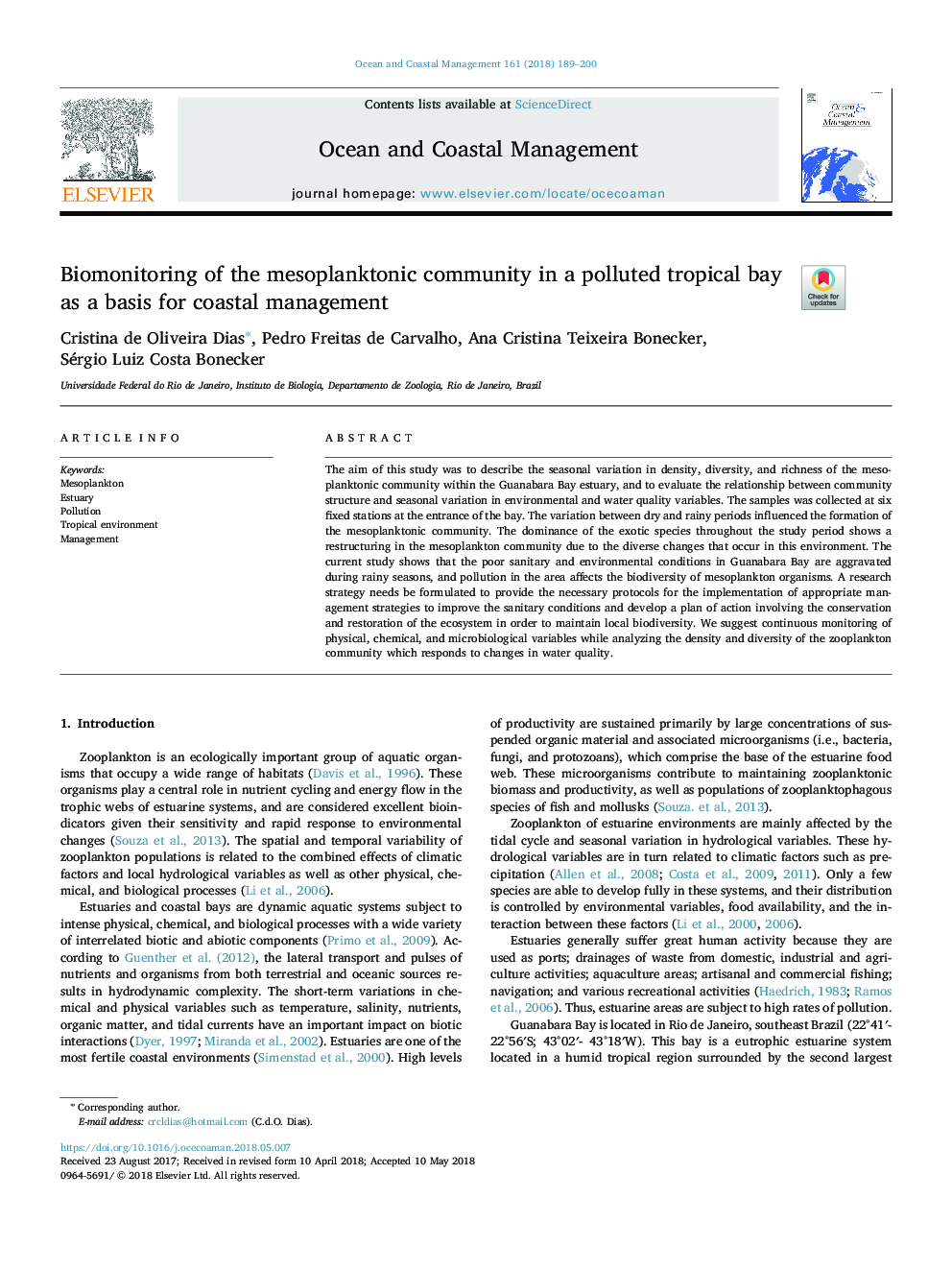| Article ID | Journal | Published Year | Pages | File Type |
|---|---|---|---|---|
| 8060628 | Ocean & Coastal Management | 2018 | 12 Pages |
Abstract
The aim of this study was to describe the seasonal variation in density, diversity, and richness of the mesoplanktonic community within the Guanabara Bay estuary, and to evaluate the relationship between community structure and seasonal variation in environmental and water quality variables. The samples was collected at six fixed stations at the entrance of the bay. The variation between dry and rainy periods influenced the formation of the mesoplanktonic community. The dominance of the exotic species throughout the study period shows a restructuring in the mesoplankton community due to the diverse changes that occur in this environment. The current study shows that the poor sanitary and environmental conditions in Guanabara Bay are aggravated during rainy seasons, and pollution in the area affects the biodiversity of mesoplankton organisms. A research strategy needs be formulated to provide the necessary protocols for the implementation of appropriate management strategies to improve the sanitary conditions and develop a plan of action involving the conservation and restoration of the ecosystem in order to maintain local biodiversity. We suggest continuous monitoring of physical, chemical, and microbiological variables while analyzing the density and diversity of the zooplankton community which responds to changes in water quality.
Related Topics
Physical Sciences and Engineering
Earth and Planetary Sciences
Oceanography
Authors
Cristina de Oliveira Dias, Pedro Freitas de Carvalho, Ana Cristina Teixeira Bonecker, Sérgio Luiz Costa Bonecker,
